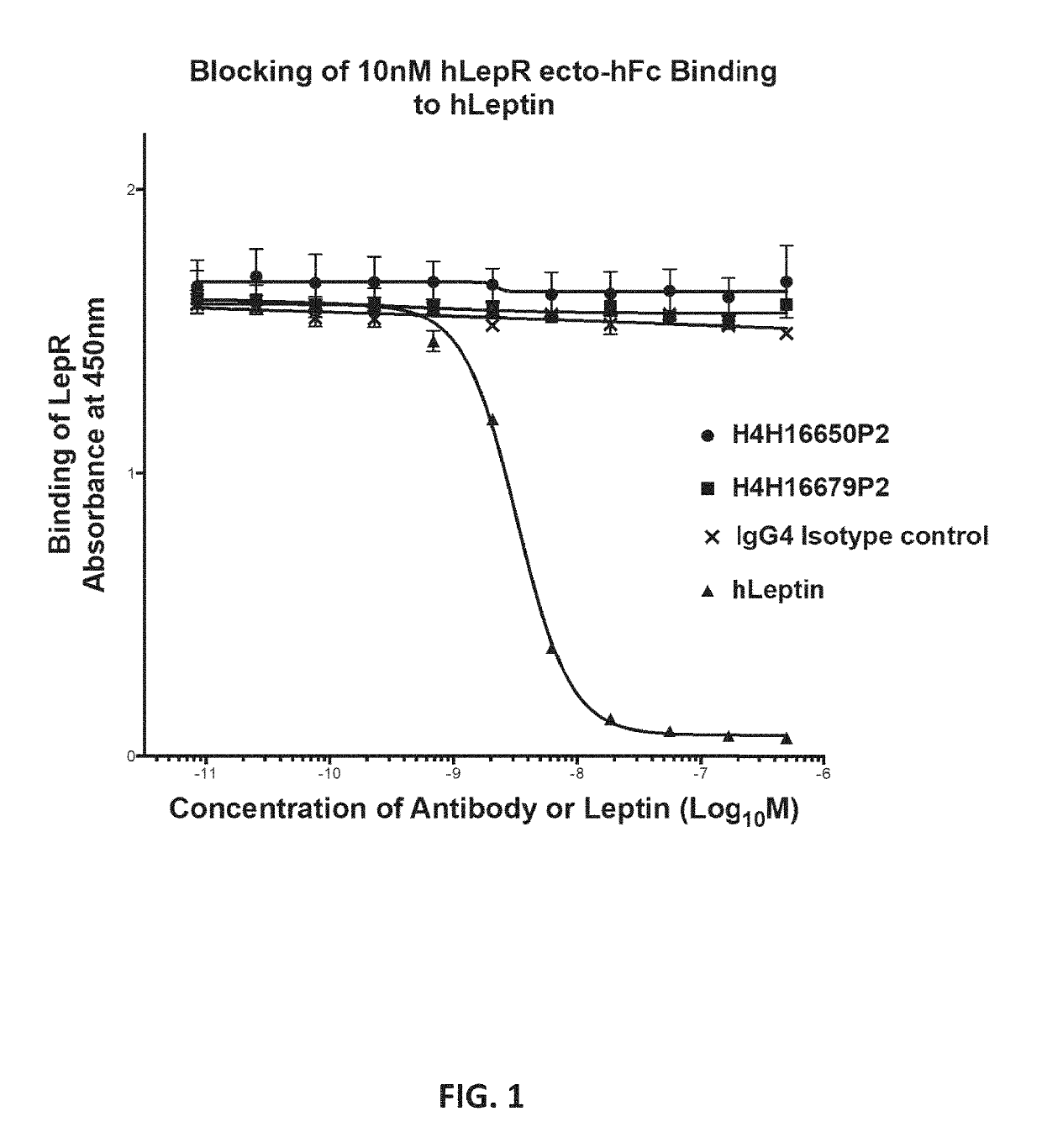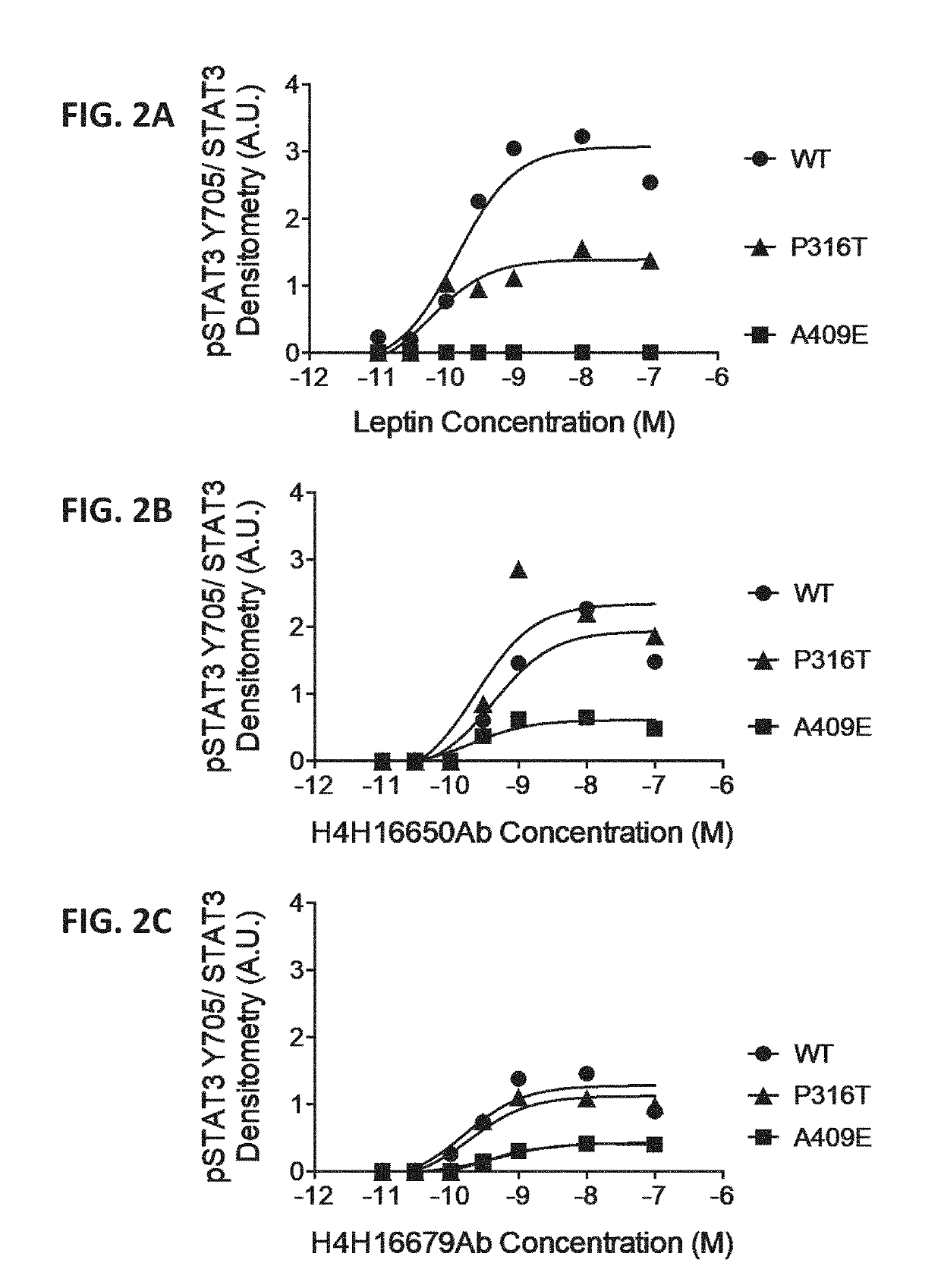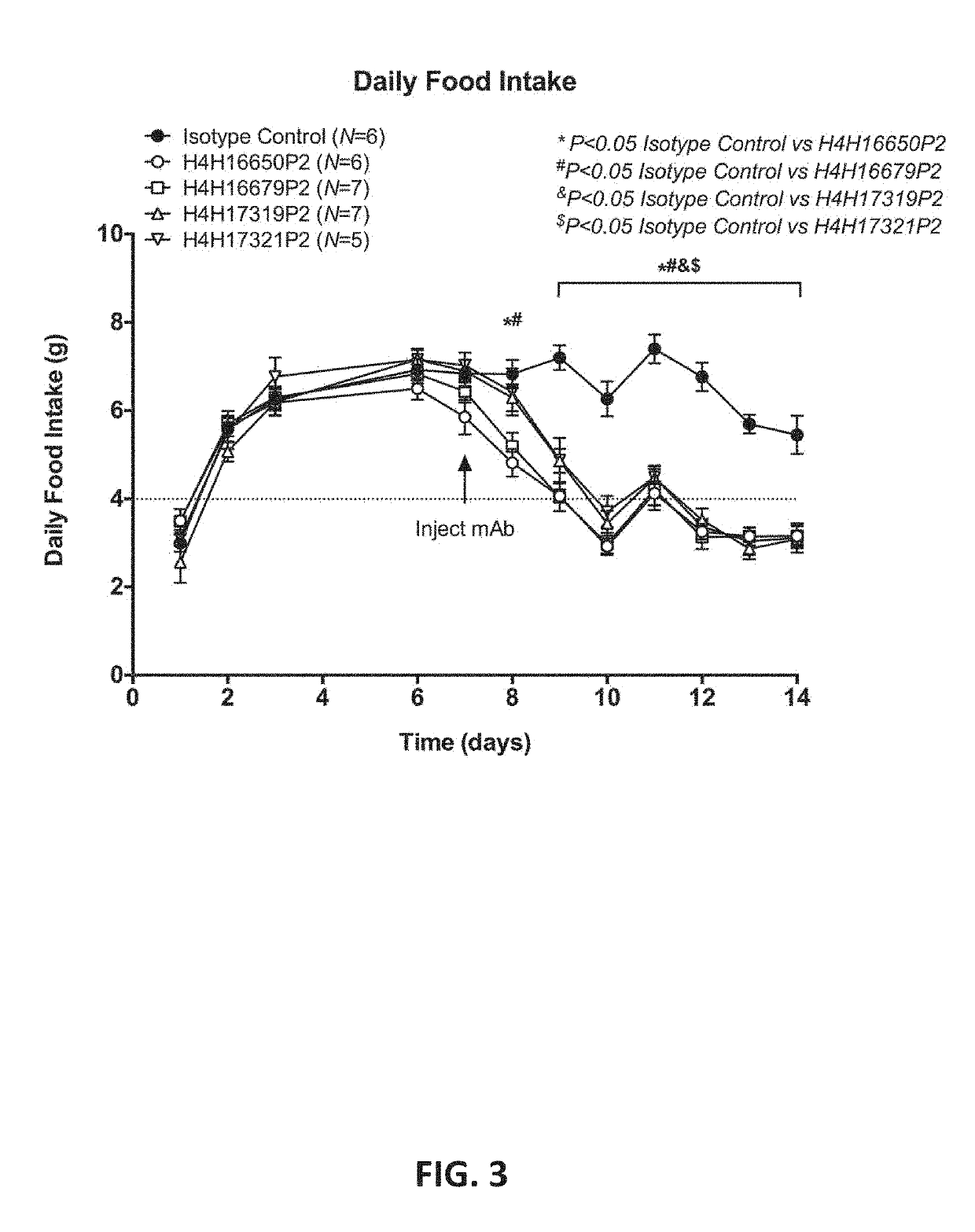Methods of treatment using a leptin receptor agonist antibody
a leptin receptor and antibody technology, applied in the field of treatment using a leptin receptor agonist antibody, can solve the problems of generalized limited efficacy and adverse side effects, and achieve the effects of stimulating hypothalamic stat3 signaling, enhancing leptin-induced or leptin-dependent stat3 signaling, and reducing circulating plasma triglycerides
- Summary
- Abstract
- Description
- Claims
- Application Information
AI Technical Summary
Benefits of technology
Problems solved by technology
Method used
Image
Examples
example 1
n of Antigen-Binding Proteins that Specifically Bind the Leptin Receptor (LEPR)
[0197]Anti-LEPR antibodies were obtained by immunizing a VELOCIMMUNE® mouse (i.e., an engineered mouse comprising DNA encoding human immunoglobulin heavy and kappa light chain variable regions) with an immunogen comprising the extracellular domain of LEPR. The antibody immune response was monitored by a LEPR-specific immunoassay. Using previously described techniques, fully human anti-LEPR antibodies were isolated and purified.
[0198]Certain biological properties of the exemplary anti-LEPR antibodies generated in accordance with the methods of this Example are described in detail in the Examples set forth below.
example 2
Light Chain Variable Region Amino Acid and Nucleic Acid Sequences
[0199]Table 1 sets forth the amino acid sequence identifiers of the heavy and light chain variable regions and CDRs of selected anti-LEPR antibodies of the invention. The corresponding nucleic acid sequence identifiers are set forth in Table 2.
TABLE 1Amino Acid Sequence IdentifiersAntibodySEQ ID NOs:DesignationHCVRHCDR1HCDR2HCDR3LCVRLCDR1LCDR2LCDR3H4H16650P2246810121416H4H16679P21820222410121416H4H17319P22628303210121416H4H17321P23436384010121416H4H18417P24244464810121416H4H18438P25052545610121416H4H18445P25860626410121416H4H18446P26668707210121416H4H18449P27476788010121416H4H18482P28284868890929496H4H18487P29810010210490929496H4H18492P210610811011290929496
TABLE 2Nucleic Acid Sequence IdentifiersAntibodySEQ ID NOs:DesignationHCVRHCDR1HCDR2HCDR3LCVRLCDR1LCDR2LCDR3H4H16650P213579111315H4H16679P2171921239111315H4H17319P2252729319111315H4H17321P2333537399111315H4H18417P2414345479111315H4H18438P2495153559111315H4H18445P2575...
example 3
lasmon Resonance Derived Binding Affinities and Kinetic Constants of Human Monoclonal Anti-LEPR Antibodies
[0203]Equilibrium dissociation constants (KD values) for LEPR binding to purified anti-LEPR monoclonal antibodies were determined using a real-time surface plasmon resonance biosensor using a Biacore 4000 instrument. All binding studies were performed in 10 mM HEPES, 150 mM NaCl, 3 mM EDTA, and 0.05% v / v Surfactant Tween-20, pH 7.4 (HBS-ET) running buffer at 25° C. and 37° C. The Biacore sensor surface was first derivatized by amine coupling with a monoclonal mouse anti-human Fc antibody (GE, # BR-1008-39) to capture anti-LEPR monoclonal antibodies. Binding studies were performed on following LEPR reagents: human LEPR extracellular domain expressed with a C-terminal myc-myc-hexahistidine tag (hLEPR.mmh; SEQ ID NO: 114), Macaca fascicularis LEPR extracellular domain expressed with a C-terminal myc-myc-hexahistidine tag (mfLEPR.mmh; SEQ ID NO: 117), human LEPR extracellular domain...
PUM
 Login to View More
Login to View More Abstract
Description
Claims
Application Information
 Login to View More
Login to View More - R&D
- Intellectual Property
- Life Sciences
- Materials
- Tech Scout
- Unparalleled Data Quality
- Higher Quality Content
- 60% Fewer Hallucinations
Browse by: Latest US Patents, China's latest patents, Technical Efficacy Thesaurus, Application Domain, Technology Topic, Popular Technical Reports.
© 2025 PatSnap. All rights reserved.Legal|Privacy policy|Modern Slavery Act Transparency Statement|Sitemap|About US| Contact US: help@patsnap.com



